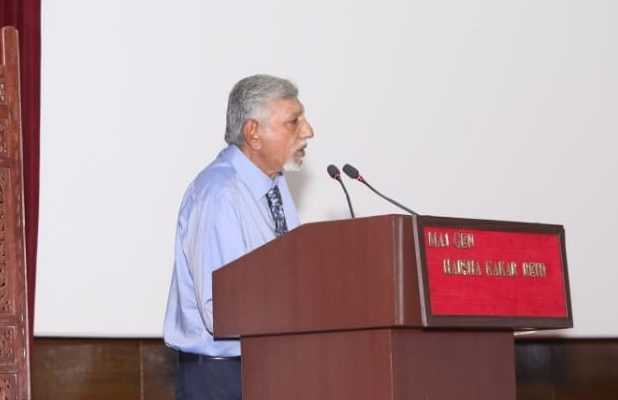
The creation of integrated battle groups (English Version) Rakshak News 25 Jun 19
http://www.rakshaknews.com/vishesh/pakistan-has-made-more-cognizance-of-the-construction-of-these-consolidated-war-groups
The creation of integrated battle groups (English Version) Rakshak News 25 Jun 19
The army announced that by the end of this year it would create two-three Integrated Battle Groups (IBGs) for the western border with Pakistan. There would be separate IBGs for offensive and defensive roles. Subsequently, the same model would be adopted for the Chinese front. The raising of IBGs was the result of a detailed analysis on the existing organization structures and their shortcomings in mobile warfare in the desert and semidesert sectors of the Pak border.
India had always been under Pak’s nuclear threat. While the threat was busted with the Balakote strikes this year, ground based operations have been planned to be launched in a nuclear environment. Pak has developed the Nasr missile, a tactical nuclear missile, which it threatens to employ on attacking Indian forces, in its own territory. By this action it hopes to curb international backlash. Further Pak’s cantonments are closer to the border than India’s, hence it can deploy its defensive formations faster than India’s offensive formations can reach their launchpads.
To overcome this advantage India adopted the ‘Cold Start’ doctrine, which implied launching operations from the ‘line of march’. However, its organization structures were not tuned to this concept. It needed tailormade organizations, suited for a specific task and in a specific terrain. Thus, was born the concept of IBGs. Since it was a new concept and involved setting aside years of tried and tested standard organizations, there was initial resistance. This took time to be overcome.
The decision to raise the IBGs was taken last year. This year, these were created from within existing formations and put through rigorous exercises in near real time scenarios. Once this concept was validated, then amendments to the considered organization was discussed and accepted in the collegium of army commanders. The proposal has now been sent to the Ministry of Defence for approval.
The existing organization structures of the army are based on the British second world war model and comprised Commands, Corps, Divisions and Brigades. Each level commanded two or more formations of the next lower level till the lowest Brigade which had three or more battalions under it. The standard division with three infantry brigades and one artillery brigade alongside supporting troops comprising of approximately 10,000 men was considered the basic fighting formation, as it encompassed all arms and services, including support services.
The present organization did not cater for changes in operations including a nuclear environment, enhancement in communication and other technologies including availability of real time information and the long and accurate reach of artillery’s fire support. The organization structures being almost similar were not tailormade for specific tasks. These shortcomings have been addressed by the IBGs.
Each IBG would be tailormade for its specific role and task. Its structure would involve a strength of more than a brigade but lesser than a division. Thus, it would be a hybrid organization. It would comprise of those elements which would contribute directly to its mission. Hence, in simplistic terms, it would be mission oriented. This would lead to multiple benefits.
The most important benefit would be that with a leaner and far more mobile structure, IBGs would be able to move faster and thrust deeper into enemy territory to offset any advantage which Pakistan has in activating its defensive formations. The next advantage would be that its spread of movement would be wide, thus offsetting Pakistan’s ability to launch tactical nuclear strikes and stopping an Indian offensive. With inherent fire support within its organization, it would not need to seek additional units at the time of launch. It would be self-sustaining in every way. These would be located closer to the border envisaging faster launch.
With the creation of IBGs, the requirement of division HQs, would be done away with. IBGs would operate directly under Corps HQs, reducing layers in command and operating to a plan prepared at the highest level. Additional resources required, if any, would be allocated prior to it being launched.
Since their strength would be lesser than a division, it would reduce the overall manpower at division level as also impact staffing. This could lead to an ultimate reduction of manpower at the national level. In many ways, the creation of mission oriented IBGs would enhance the combat potential of the army and add to threats for Pakistan. A right step being undertaken for modernization of the army.